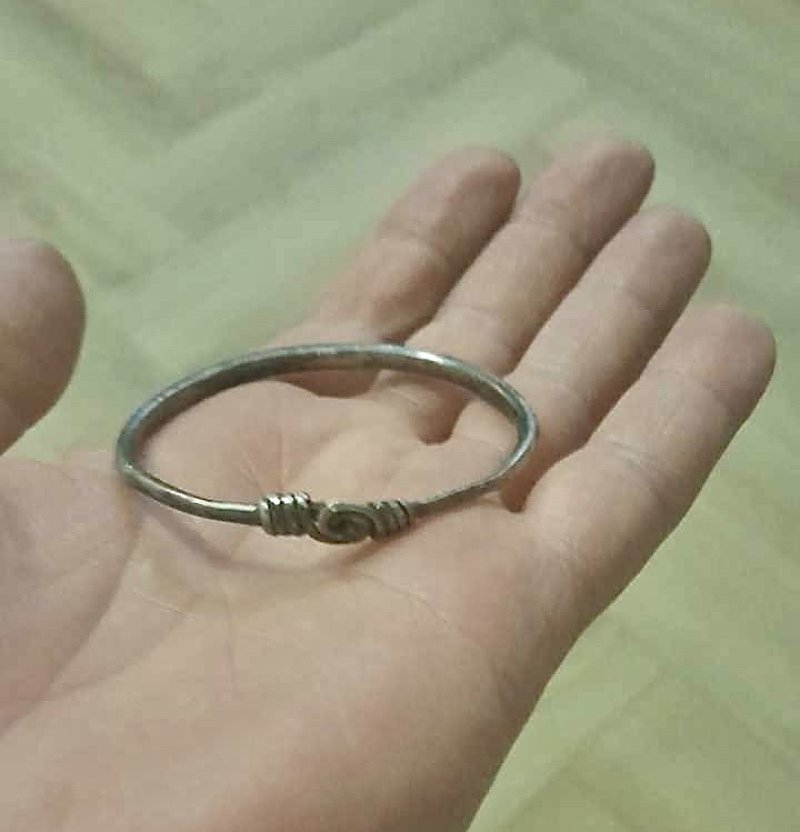A hoard of silver items which appear to be simple, but precious, jewellery have been confirmed as Viking age finds by archaeology specialists.
The finds, which look like silver bangles or cuffs, were found late in 2023 by Lewis metal detectorist Stephen Macleod and were taken to Edinburgh, where they are being examined by historical experts.

And although archaeologists at the National Museum of Scotland told welovestornoway.com that it could be some time before the objects were fully assessed, they have already confirmed that the find is of significant interest.
A spokesperson for the Treasure Trove Unit said: “Archaeologists from the Treasure Trove Unit and National Museums Scotland attended the findspot of some Viking-age silver artefacts found in 2023.
“The team were able to confirm that all of the finds had been recovered. The case will be processed through the Treasure Trove system in due course.”
Stephen himself said that finding the ancient and precious objects was ‘the best feeling he had ever had’ after he struck it lucky with the detecting find near his home on the Westside of Lewis.
He said: “I don’t think I will ever find anything like this again. It was an amazing feeling, though I only had it in the house for a couple of nights before I had to hand it in.
“It’s been taken away to Edinburgh just now, but hopefully it can return to the Stornoway museum one day.”
If they think they have found something of archaeological significance they are obliged by law to report it to by the Treasure Trove Unit at the National Museum of Scotland.
Based on the principles of the Scots common law ‘bona vacantia’ (ownerless goods), the role of Treasure Trove is to ensure that objects of cultural significance from Scotland’s past are protected for the benefit of the nation and preserved in museums across the country.
In Scotland, ownerless objects found by chance or through activities such as metal-detecting, field-walking or archaeological excavation become the property of the Crown and therefore may be claimed as treasure trove.
Any object considered to be significant, regardless of its age or composition, may be claimed as treasure by the Crown.
Whether or not they are confirmed as treasure, Stephen’s discoveries look likely to add to international understanding of North Lewis Viking history.

In a report in 2014, the Centre for the Study of the Viking Age at the University of Nottingham said: “Archaeological finds from the Isle of Lewis have advanced our understanding of the Norse settlement in this territory.
“Excavated Viking-Age settlements at Bosta and Barvas shed light on the daily life of the Norse farmers, the new agricultural practices they brought with them and the continuity of use of certain technologies, such as pottery.”
A National Museums Scotland touring exhibition which came to Museum nan Eilean in 2018 showed how silver, and not gold, became the most precious metal in Scotland in the first millennium AD.
But Stephen might have quite a wait before he finds out what his finds might contribute to Lewis history – Treasure Trove spokespeople said that they are still working their way through a Covid backlog and the processing of his finds could take some time.
The pictures show some of the images taken by Stephen while he had the Viking finds in his own hands, and Stephen with his dog ready to go on the day of the National Museums of Scotland site visit (Stephen Macleod).

